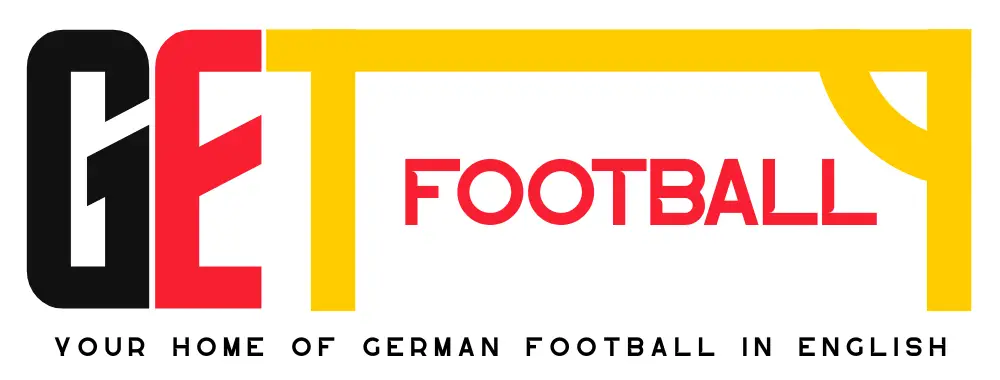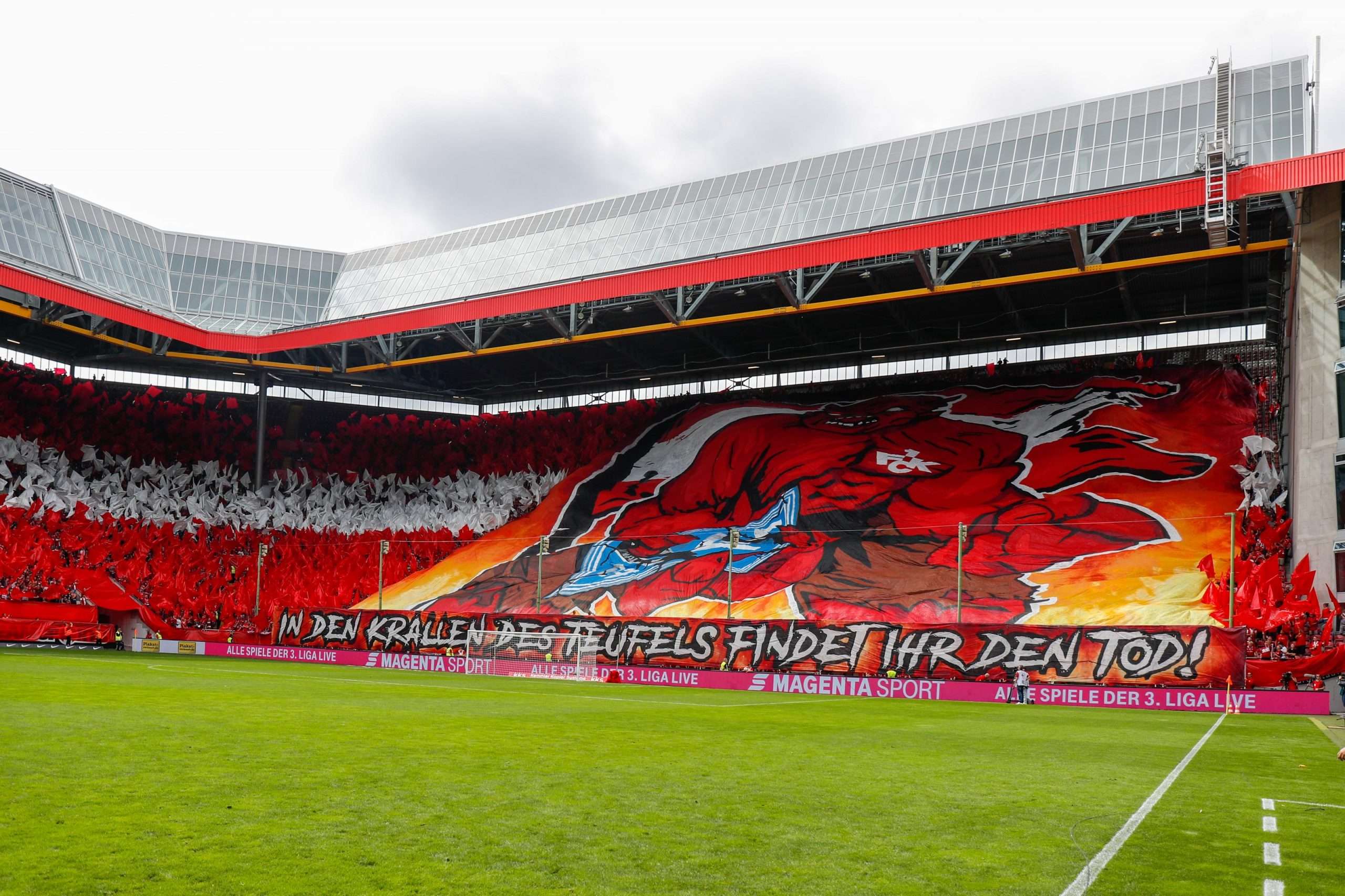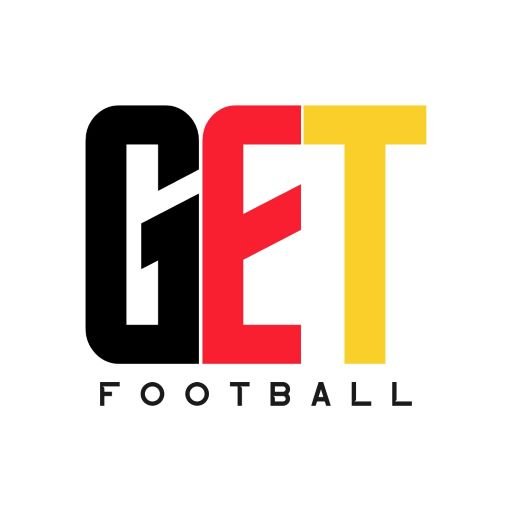During this international break, attention turns away from domestic German football temporarily. However, those still looking to get their fix may have turned to the 3. Liga this matchday, the third level on the German pyramid.
Casual football fans may not ordinarily pay much attention to the country’s third tier, but even a quick glance at the clubs at this level would draw their attention. Several so-called ‘sleeping giants’ find themselves in 3. Liga after long periods of decline and mismanagement.
These sides boast a greater pedigree and fanbase than several Bundesliga clubs, which makes 3. Liga extremely attractive as a division but even more saddening that they find themselves at this level in the first place.
1. FC Magdeburg, for instance, follow a running theme of former East German sides experiencing a steady decline following reunification. The club were DDR Oberliga champions three times but their real highlight was the 1974 European Cup Winners’ Cup triumph over AC Milan, leaving Magdeburg as the only East German side to win a European trophy.
Despite these DDR-time successes and a third-place finish in the final DDR Oberliga season, FCM rather unfairly found themselves in the third tier of the newly reunified German league system in 1991. Little positivity followed over the next two decades, despite a move to the impressive MDCC-Arena in 2006.
In fact, Magdeburg were in the fourth tier as recently as 2015 before undergoing something of a revival under Jens Härtel. They managed to reach 2. Bundesliga in 2018/19, remarkably their first season in a unified German second tier. This only lasted one season before relegation, but was largely a positive experience as Magdeburg attracted an average attendance of 20,225 and recorded a memorable away victory over Hamburg.
The side have struggled in their return to 3. Liga, only narrowly escaping relegation last season and are similarly floundering so far in this campaign under Thomas Hoßmang. However, this is by no means unfamiliar to supporters after the last three decades.
Magdeburg’s bitter East German rivals, SG Dynamo Dresden, are another side who find themselves at third division level, having been relegated from 2. Bundesliga last season.
Dynamo found even greater success during the DDR era, being champions eight times and unlike their rivals managed to secure a place in the 1991/92 Bundesliga. They remained in the top flight until 1995 and are yet to return, experiencing a hard decline in the years following this, actually plummeting to the fourth tier by 2000.
In recent years, Dresden have at least had more success than Magdeburg, bouncing between 2. Bundesliga and 3. Liga. They had a four-year consecutive run in the second division until their recent relegation and will be expected to be one of the main challengers for promotion come the end of this season.
Whatever happens on the pitch, SG Dynamo will always boast a loyal support, with the Rudolf-Harbig-Stadion an intimidating prospect for away sides. Perhaps the best recent example of the fanaticism of Dynamo Dresden’s fans was the 35,000 travelling support to Berlin last season for the DFB Pokal tie against Hertha BSC.
This figure serves as a reminder of the Saxony side’s massive potential as a club, which feels wasted at this level. Dresden will hope for a quick bounce back to 2. Bundesliga and hopefully a return to the Bundesliga in the not-too-distant future.
Another former East German club with a sizeable following is FC Hansa Rostock, who have almost become part of the 3. Liga furniture having been in the division since 2012.
They have at least had greater relative success since reunification than Magdeburg and Dynamo Dresden. As the last champion of the DDR Oberliga, Hansa participated in the 91/92 Bundesliga but were immediately relegated. However, after returning in 1995, Rostock impressively remained in the top flight for a decade until relegation in 2005.
They have toiled since, with the aforementioned long run in 3. Liga in recent seasons. Nevertheless, there are clear signs of a positive trajectory, with consecutive sixth-place finishes in the last three seasons and a strong start to this campaign which should see Hansa pushing for the second tier this year.
Similarly to Magdeburg and Dynamo, greater success on the pitch could begin to unlock the club’s potential in terms of fanbase. According to a 2007 Sportfive study, Hansa Rostock were reported to be the seventh-best supported team in Germany with around two million constituting their fanbase. This was the largest figure in the former East Germany and goes to show what the club could achieve if they could manage to climb the leagues and return to the Bundesliga at some point.
Moving away from the former East, Bayern’s city rivals TSV 1860 München are another large club in 3. Liga. They have a rich history and can count the 1966 Bundesliga crown as part of their honours.
1860 München were an early staple of the Bundesliga, but their most recent top-flight run came between 1994 and 2004. A year later in 2005, they along with Bayern moved into the new Allianz Arena. Originally co-owners, 1860 quickly ran into financial difficulties and had to sell their 50% share to Bayern, effectively becoming tenants at the ground.
Economic problems came to a head in 2017, following die Sechzger’s defeat to Jahn Regensburg in the 2. Bundesliga relegation playoff. Unable to compete in 3. Liga due to Jordanian investor Hassan Abdullah Ismaik’s refusal to pay the league license fee, 1860 were demoted to the fourth tier Regionalliga Bayern.
To compound misery, termination of their rental agreement with Bayern at the Allianz Arena forced them to find a new home. They moved back to previous ground Stadion an der Grünwalderstraße. An old-fashioned stadium located in the district of Giesing and seen as 1860’s spiritual home, the move was received positively by supporters.
Fortunately, the stay in Regionalliga Bayern lasted only a season and they were quickly promoted to 3. Liga where they are playing their third consecutive campaign.
Much like Hansa, 1860 München’s positive start to this season under Michael Köllner is a hopeful sign that the club are heading in the right direction with a push towards 2. Bundesliga.
Perhaps the most dramatic change in fortunes has been experienced by 1. FC Kaiserslautern. Unlike the other 3. Liga clubs mentioned, die Roten Teufel have experienced success in relatively recent times with Bundesliga titles in 1991 and 1998 and participation in European competition, reaching two UEFA Cup semi-finals and the Champions League quarter-finals in 1999.
FCK’s history and successes are synonymous with the iconic Fritz-Walter-Stadion, fondly known as the Betzenberg, where big clubs such as Bayern have floundered in the intimidating home atmosphere down the years. Now holding nearly 50,000 spectators and dwarfing the majority of other 3. Liga stadiums, it concurrently serves as a painful reminder of past glories and current failures.
Kaiserslautern had become something of a so-called ‘elevator club’ in the past two decades, last playing in the Bundesliga in 2012. After narrowly missing out on immediate promotion back the following season, hope of a return to the top-flight seemed gradually more distant by the year.
Eventually after falling down the 2. Bundesliga, FCK were relegated to 3. Liga for the first time in 2018. Being such a big name in the third tier has counted for nothing so far, as Lautern were mediocre at best in the last two campaigns and have struggled badly so far this season. Additionally, the club’s long-time financial worries culminated in Kaiserslautern entering insolvency proceedings in June. Whilst their survival as a club seems safe for now thanks to the contributions of investors, the long-term future of Lautern both on and off the pitch must be a concern for supporters.
All of these five clubs mentioned have differing circumstances which have led this to this point, but the fanbase and pedigree of each mean their natural position in the order of German football should be much higher than where they currently reside. Each club will hope for a more positive future and a push to the Bundesliga at some point, but in the meantime their current existence in the 3. Liga makes for an exciting league which is well worth following.
By Colin Moore.









